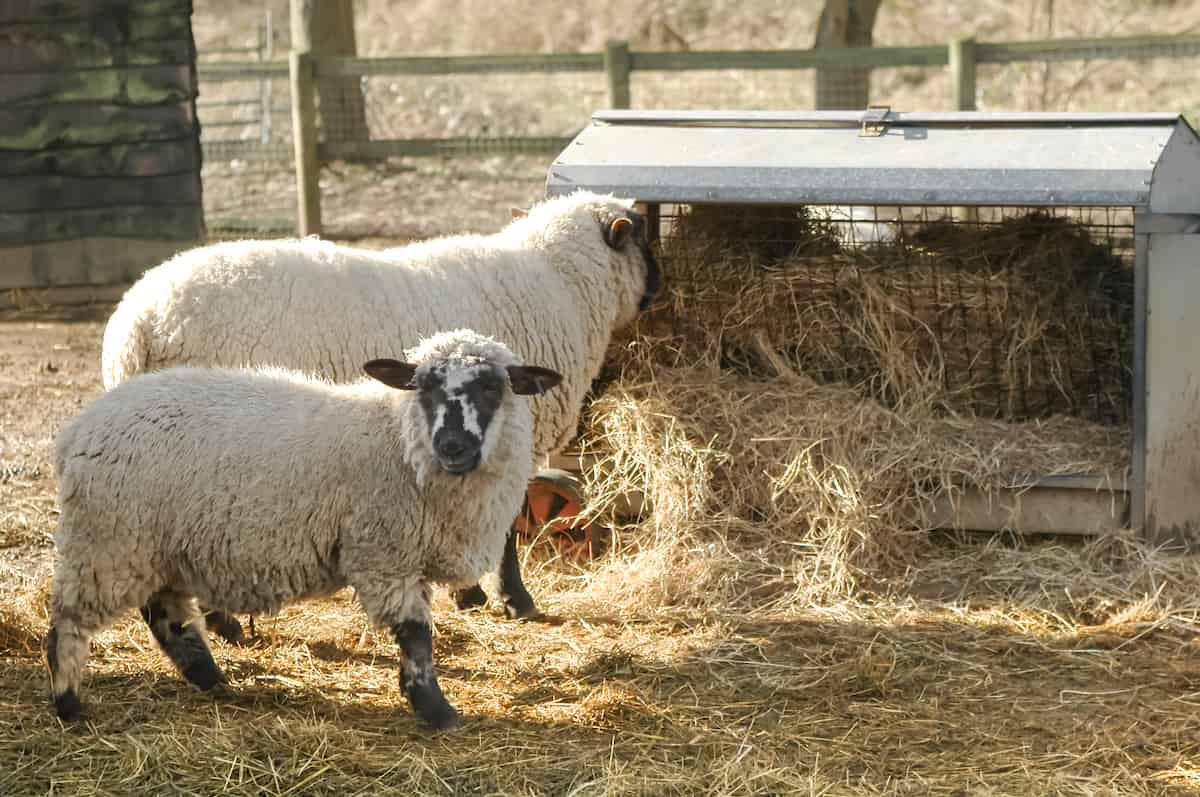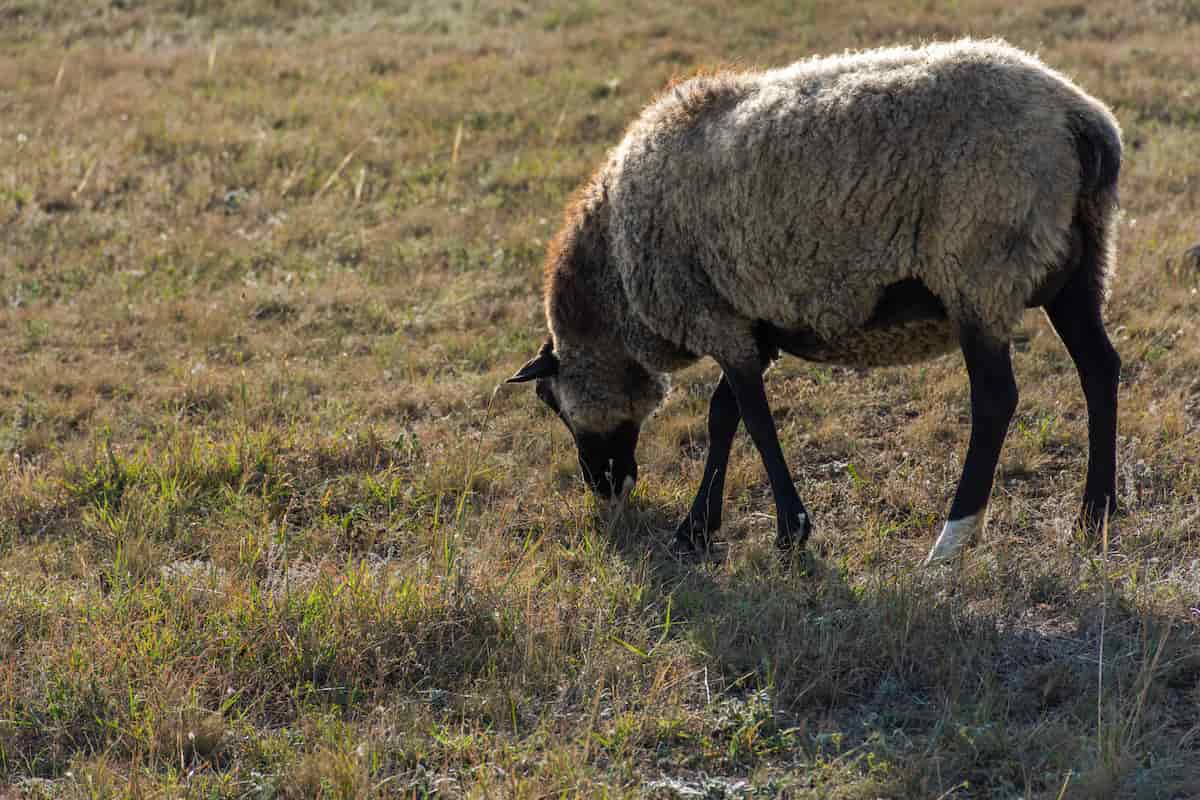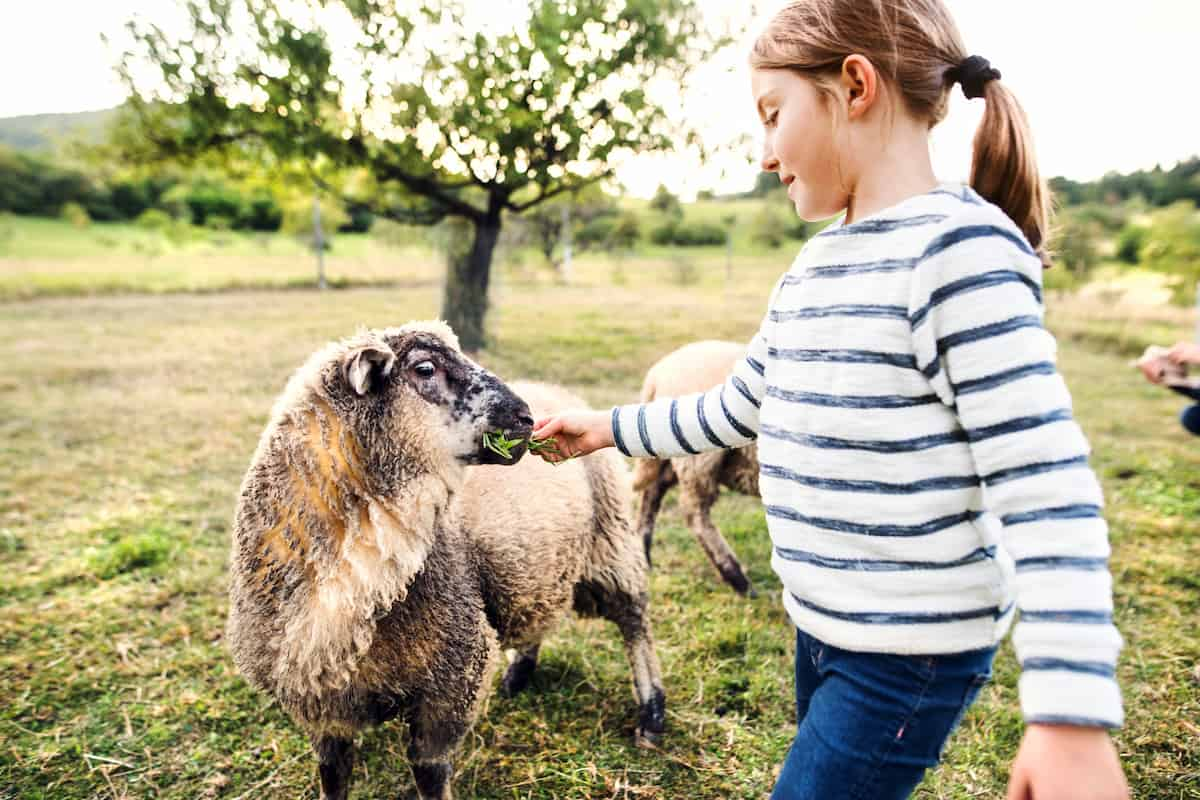In addition to providing income and diversifying agriculture, sheep are versatile animals and hobby animals. Farmers need to choose sheep breeds that guarantee the best results, and there are many types of sheep breeds. Many small-scale sheep owners love the Hampshire sheep breed because it is among the largest sheep species. Unfortunately, most shepherds buy these sheep based solely on their visual assessment.

Hampshire Down Sheep Facts
History and Origin of Hampshire Down Sheep
The Hampshire sheep is a domestic sheep breed from the United Kingdom. Originally, it was called Hampshire Down sheep and was developed around 1829. This breed was developed by crossing Southdowns with Old Hampshires. Some Old Hampshire breeds include the Wiltshire Horn and the Berkshire Nott.
Around 1829, a farmer named John Twynam crossed his Hampshire flock with Cotswold Rams. These compact, blocky rams formed the first recognized pedigree Hampshire sheep flocks in the United Kingdom around 1835. In honor of its origin, the Hampshire sheep breed bears its name. Hampshire County is located on the south coast of England, where the climate is milder than most of the country.
Physical Characteristics of Hampshire Sheep
- Hampshire sheep are mostly white, except for dark ears, faces, and legs. If your sheep has pink skin, it is healthy, so check if it is healthy by checking its skin.
- Hampshire sheep are large, white, open-faced, masculine, and have deep, blocky bodies that make them appear like oxen in the sheep world.
- Due to its white wool and dark face under a wool cap, this breed fits most people’s stereotypical ideal sheep.
- Dark brown or black coarse hair covers its ears, and they are drooped and do not have wool coverings.
- Its head is large and has a long, dark face that is not woolly on the bottom.
- A distinguishing characteristic of this breed is the unbroken wool cap that extends from the neck over the forehead.
- Furthermore, its legs are dark with less or no wool below the knees, its bones are smaller, its legs are shorter, and its back is broad and straight.
- A mature Hampshire ewe weighs 90 kilograms and over, while a mature ram weighs 125 kilograms and more. The breed is usually polled, meaning it does not have horns.
- Hampshire lambs mature quickly and possess large steep bones and lean carcasses. Females have two medium-sized teats and tight udders.
- The wool of Hampshire sheep is strong and medium-length, and it can be combed and knit into yarns, socks, and flannels. In contrast, the wool is medium-grade, less refined, and less pure.
- It is common for shepherds to blend wool with other breeds to improve its texture and durability. You can collect 3-4 kg of wool from a mature Hampshire sheep.
- The Hampshire ewe typically produces at least two lambs per year that are strong and active.
Hampshire Down Sheep Breed Care
A sheep is considered one of the most obedient animals because of its strong herd instinct. It is recommended to graze them on pastures during the summer. A room that is insulated is necessary for animals during the winter season. Ensure that it is fully ventilated. Furthermore, a full-fledged ventilation system must be set up, as well as insulation of the walls.
The room temperature should be at least +6 degrees. The temperature should be at least +15 degrees during lambing season. Hooves are sheep’s weak points. Planks are therefore recommended for the floor in the room. Straw bedding should be placed over it from above. Keeping the hooves clean and trimmed is essential. Joint problems are more likely to develop if this step is not taken.
In case you missed it: Suffolk Sheep Facts: Origin, Physical Characteristics, Size, Pros, and Cons

Feeding Requirements for Hampshire Down Sheep Breed
When enough pasture is around in the summer, nutritional problems for sheep are unlikely to occur. Winter is a good time to pay special attention to feeding animals. During this time, rough varieties of feed can be used, which should be harvested in the summer. Farmers sometimes use dry foliage as bedding for sheep, which they eat. Sheep must be fed three to four times daily in winter to keep calm. When the weather is fine, it is recommended to do this outside. Feeding should also include hay, silage, and straw.
Sheep may also consume root crops in their diets. When feeding sheep food, it is a good idea to do so simultaneously. More care should be given to breeders. Oats and potatoes should definitely be added to their diet. In addition, high-quality hay must be used. When sheep are pregnant and lactating, their nutritional needs increase. It is important, however, to avoid foods that can provoke fermentation in the body, such as sour silage. The following types of food should be given to sheep during pregnancy – Hay, Roots and Compound feed.
Advantages of Rearing Hampshire Down Sheep Breed
- Hampshire sheep are known for their meat production. These sheep are primarily used for this purpose.
- Their diet consists only of grass, and they do not require any special feeding. Their strength comes from consuming herbs that they convert into muscle and fiber. Compared to other breeds, they convert food into energy more efficiently.
- Besides serving as a meat sheep, it also produces wool.
- Hampshire sheep meat is highly valued in various countries because of its high quality. Farmers must take care of them carefully because they are used commercially. Fabric and other items are made from their wool.
Disadvantages of Rearing Hampshire Down Sheep Breed
The Hampshire sheep has many benefits, but there are also some drawbacks. Since these sheep were originally from the United Kingdom and are transported to multiple countries, some special requirements should be met for their growth and development. Their vigilance and control require proper fencing and labor. Predators may attack. The animals can easily catch these sheep.
In case you missed it: Texel Sheep Facts: Origin, Physical Characteristics, Size, Pros, and Cons

Conclusion
Hampshire sheep offer fine meat, wool, manure, and even milk that can benefit you and your family financially, not to mention their landscaping services. In addition to being relatively cheap, sheep have docile dispositions and don’t require much attention or luxury facilities.
- Feed Your Flock for Less: Top 10 Tips to Save on Chicken Feed
- Ultimate Guide to Ossabaw Island Hog: Breeding, Raising, Diet, and Care
- Hatching Answers: The Top 10 Reasons Your Chickens Aren’t Laying Eggs
- Eggs and Economics: Breaking Down the Cost of Raising Backyard Chickens
- Defend Your Greens: Proven Methods to Keep Iguanas Out of Your Garden
- Ultimate Guide to Cinnamon Queen Chicken: A Comprehensive Guide for Beginners
- Ultimate Guide to California Tan Chicken: Breeding, Raising, Diet, Egg-Production and Care
- Ultimate Guide to Marsh Daisy Chicken: Breeding, Raising, Diet, and Care
- 10 Types of Chicken Farming Businesses You Can Start for Profits